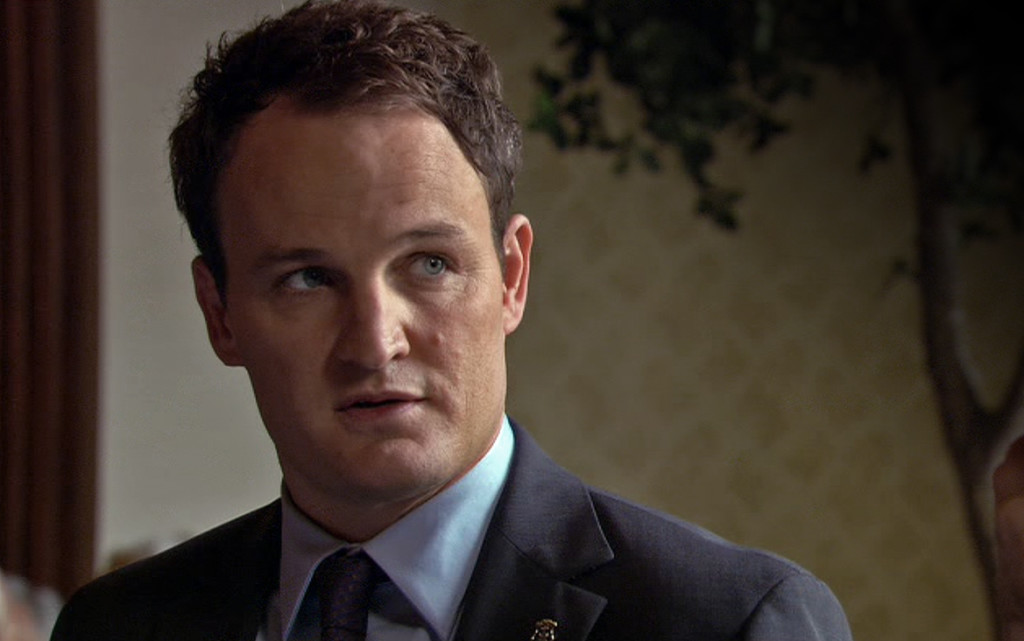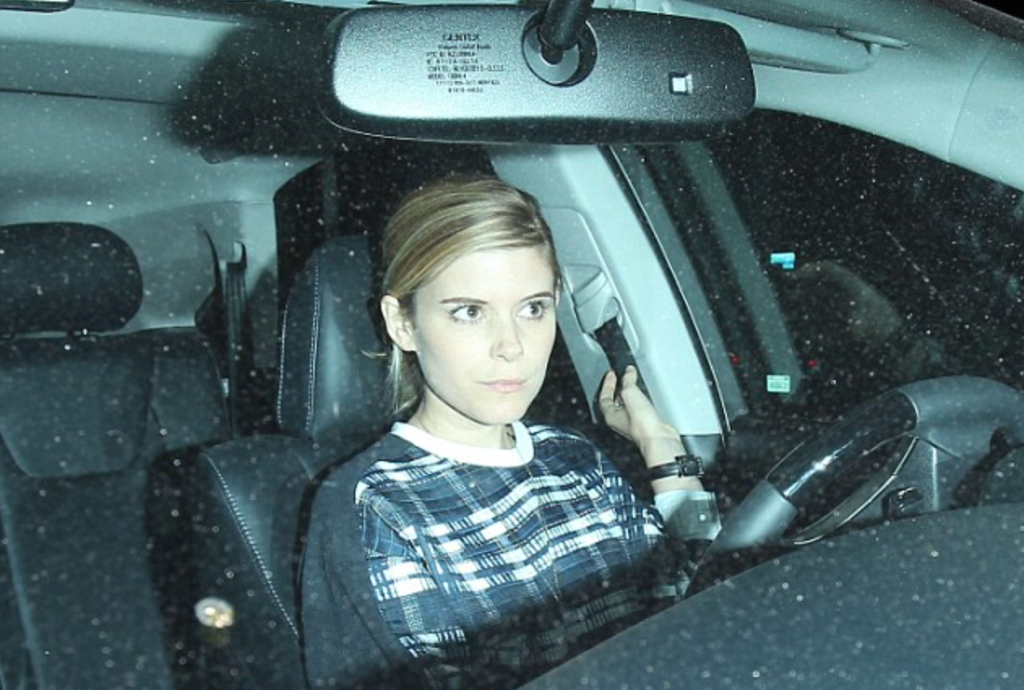Genre: True Life Story
Premise: The true story of how an intoxicated Ted Kennedy drove a young woman home, crashed into a pond, and didn’t attempt to save her life, instead focusing on saving himself and his political career.
About: This script finished on last year’s Black List. It will feature rising star Jason Clarke as Ted Kennedy and Kate Mara as the doomed Mary Jo Kopechne. A lot of democrats are not happy this movie is being made as they feel it will permanently tarnish Ted Kennedy’s reputation. The film will be directed by Fifty Shades of Grey director, Sam Taylor-Johnson, who you may know is married to Kickass and Godzilla star, Aaron Taylor-Johnson.
Writers: Taylor Allen & Andrew Logan
Details: 140 pages
I’m telling you, guys and gals. True-life stories are the hot new spec path. They give your script the prestige feel of a biopic, but the focus of a feature concept, since you only have to cover one event as opposed to an entire life.
Up until this point, the majority of true story features were coming out of World War 2. But with studios closing their wallets to original ideas, it’s forced (allowed?) the true story market to expand. And the great news about that is there’s a million great untold stories out there.
And most of them are right under your noses! I’ve been hearing about Chappaquiddick for 20 years and only now is someone writing a script about it. So imagine what else is out there for the taking.
Speaking of taking, this one takes some patience. You’re going to get angry. Chappaquiddick is about a group of men so concerned about covering their asses, that they didn’t even realize the death they were covering up hadn’t happened yet.
Senator Ted Kennedy is still dealing with the loss of his brother, Bobby. But where there is tragedy, there is opportunity, and Ted’s name has been mentioned in some circles as the next president.
The problem is, Ted’s a drinker. And while partying it up in his lakeshore cottage, he convinces his 28 year-old girlfriend, Mary Jo Kopechne, to go for a joy ride with him. During their drive, Ted takes a wrong turn and his car ends up in a shallow pond that’s just deep enough to submerge his vehicle.
Ted, freaking out, escapes the car, not giving two shits about Mary Jo. Meanwhile, the car begins filling up with water slowly. So Mary Jo is still alive in the car while Ted is up on the shore, figuring out how he’s going to get away with this.
He goes back to the party, grabs his cousin, Joe Gargan, and heads back to the pond to ask him what he should do. Joe’s pissed as hell that Ted hasn’t checked to see if Mary Joe is actually dead and jumps into the pond to save her, but the water’s too murky. It’s impossible to see anything.
So the two head back to the party and start strategizing on how they’re going to spin this. Meanwhile, we keep cutting back to Mary Jo, who was alive and well in the car for hours, but trapped and unable to get out. Eventually, the car filled up with water, and Mary Jo endured the slowest and most agonizing death imaginable.
The rest of the script is Joe getting together with the powerful Kennedy trust and figuring out how they can make this look like an innocent accident. If they fail, Ted could go to prison, ruining his chances at becoming president, and permanently taking down the Kennedy clan with him.
Chappaquiddick starts off with a Roshomon-like sequence that has Ted explaining his version of events to the local police chief, where Ted heroically attempted to save Mary Jo’s life multiple times, only for him to eventually run out of options.
We then cut to what really happened, which is that Ted escapes the car, doesn’t attempt to help Mary Jo at all, and Mary Jo watches helplessly as the water rises up until there isn’t any air left to breathe.
By the way, if you ever want to sound smart in a film conversation? Bring up Roshomon. It doesn’t even have to make sense. “You guys see Captain America: Civil War? It was basically a Rashomon remake, am I right?” “Angry Birds, man. The Roshomon influences were through the roof.” I’ve found that most people won’t know what you’re talking about but assume that you’re really smart and simply agree with you.
Back to Chappaquiddicth, starring Ted Kennedy as Dumbledore. Structurally, I think the script took the best route. They throw the car crash at you early on and the rest of the plot is the cover-up.
Whenever you’re writing these true stories, you’re looking for a) the part of the story that has the biggest dramatic punch and b) the part of the story that has enough legs to last two hours. Unfortunately, these two things are often at odds with one another.
So here, the part of the story that possesses the most dramatic punch is the crash. But you can’t extend the crash into a 2-hour ordeal. It doesn’t last long enough for that. Luckily, the cover-up story has legs, so you can use that as the central plot.
This is the same problem the upcoming “Sulley” is facing. The part of the story with the most dramatic punch is the plane crash. But the plane crash only lasts two minutes. So they need to find something in the concept that has legs and I don’t think there is anything.
Ideally, you find an idea where the element with the most dramatic punch is also the element with legs. Titanic is a good example.
I only had one major issue with Chappaquiddick, and it’s something we never talk about here on Scriptshadow.
IMPORTANT DESCRIPTION
Description is often set dressing. It’s there to paint an image for the reader. It should almost be invisible. But there are moments in a script where description becomes extremely important. And that’s when we’re in a big scene where important things are happening and the setting isn’t easily imagined.
That’s the definition of the car crash in Chappaquiddick.
How is it, for example, that Mary Jo is in a car where all the doors and windows are closed? That’s the only reason the car doesn’t fill up with water immediately, right? But then how did Kennedy get out of the car??? Did he teleport? He must’ve had to open a window or a door. But then how did that window or door get re-closed?
This description problem continues when we’re describing Mary Jo “swimming” up to the front of the car. Why does she have to swim anywhere? In every car I’ve ever been in, all you have to do is reach forward to the front seat or slide in between the two front seats. “Swimming” makes it sound like she’s competing against Michael Phelps at the Olympics. Is this a car or a bus? Spatially, I don’t know what the hell’s going on.
These are super important details that the reader has to know in order to visualize the scene correctly. Especially in a scene like this where the reader’s going to be asking, “Why can’t she roll down a window?” “Why can’t she open a door?” “Why doesn’t she use something to break the window?” You have to make it clear why these aren’t an option.
Whatever it is you’re writing, when you get to the key moments, make sure they’re clear as day. Get specific. Err on the side of too much detail. Cause what you don’t want is the reader imagining a haze of fog.
Despite some good things here, I went back and forth with this one. The story crackles in places. But it’s also 140 freaking pages long. It shouldn’t have been a hashtag over 115. You’re essentially writing a thriller here. Thrillers need to move fast.
And I don’t care how compelling your story is. If you’re making the reader wade through 30 extra pages because you’re too lazy to focus on what’s important, that’s a screenwriting sin.
I mean, I guess this is worth reading but it’s right on the border between ‘wasn’t for me’ and ‘worth the read.’
[ ] What the hell did I just read?
[ ] wasn’t for me
[x] worth the read
[ ] impressive
[ ] genius
What I learned: If you’re writing a really important scene and it’s essential that the reader not be confused, I’m okay with you bucking screenwriting rules and speaking to the reader directly. So in a case like this, it’s okay to write: “NOTE TO READER: The car is angled front first, straight up and down, with water coming into the front of the car and rising six inches every ten minutes. Because the car is vertical, the back of the front seat is horizontal, and that’s what Mary uses as a seat.” The point is, the reader MUST understand what’s happening in the key scene. So if you have to cheat to help them understand, do it. Put a fucking diagram in the script if you have to. Seriously. Cause nobody cares if you stayed true to screenwriting rules if they have no idea what happened.



